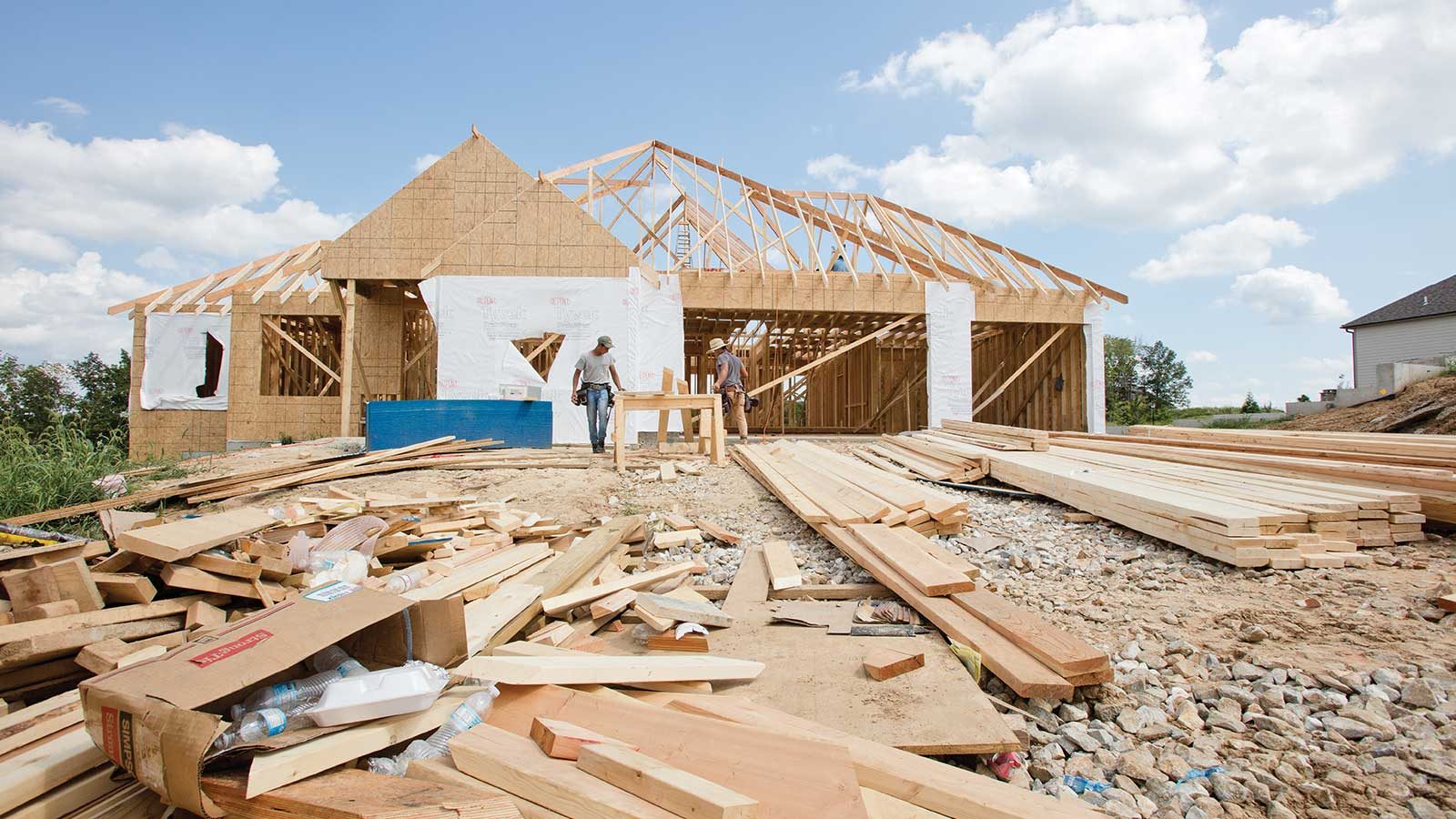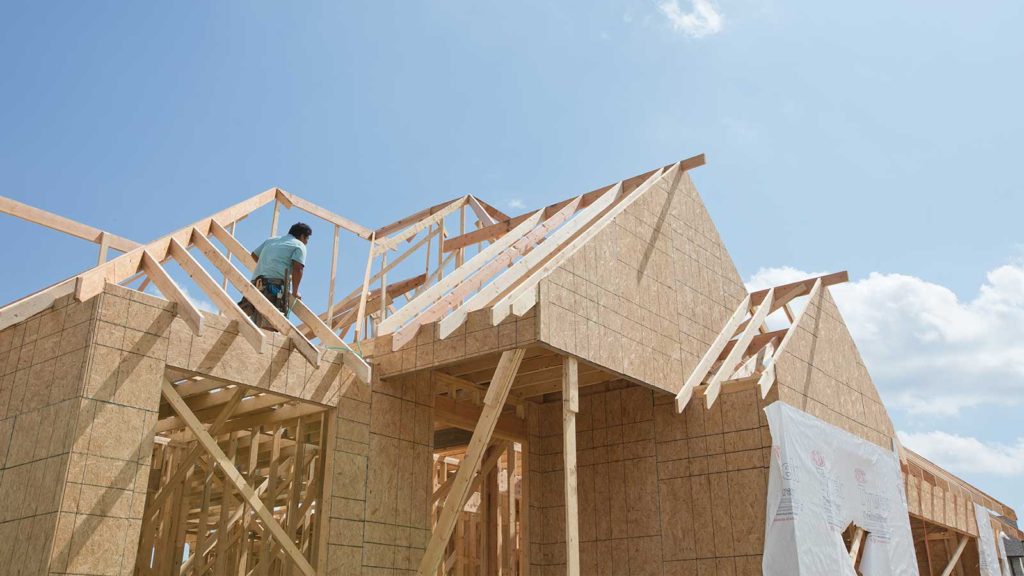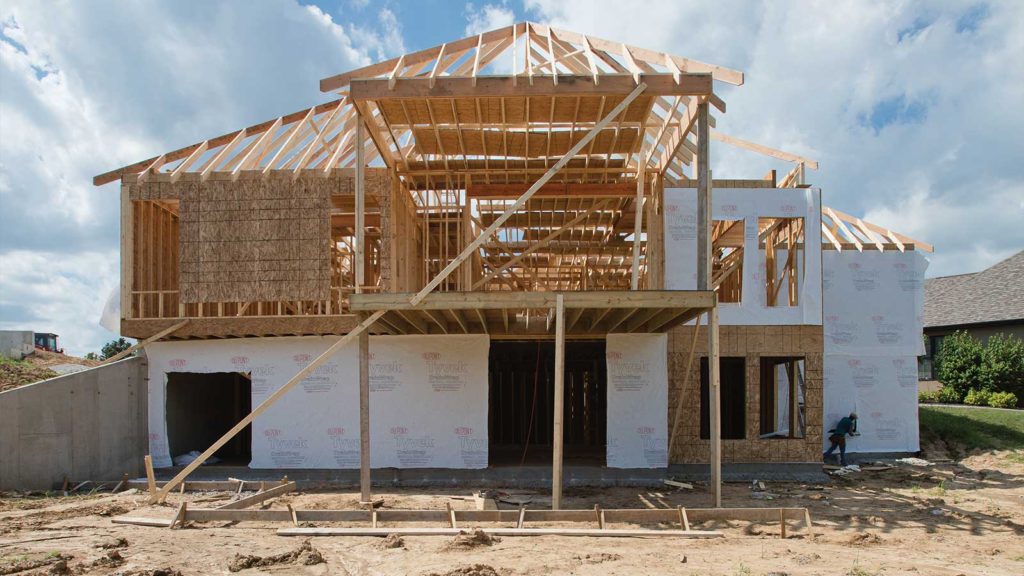
Local experts provide insight on designing your custom home.
Now that you’ve decided to build and determined financing, it’s time to turn the focus to designing your custom home. When designing, you’ll have to tackle questions of who you should use and where you find plans. To answer these questions, we turn to local experts as well as homeowner Bennett Arey, who is currently going through the building process.
“Once a client has decided that building a new home is right for them, they can take one of two general paths,” says Brian Morgan, owner of Brian Morgan Architects. “Their first option is to hire an architect to design them a custom home specific to their family, how they live, and their particular site. The other option would be to select a pre-designed plan, possibly make some minor modifications, and find a builder to build that design.”
Brian Morgan Architects, for example, is a custom home design firm that does not start with stock plans. Every drawing that comes out of their office is completely original and specific to a single project.
Cale Kliethermes, owner of Kliethermes Homes & Remodeling, says their company has a draftsman on staff and they can take clients from design through building for both custom homes and remodels.
“We typically talk to them about why they want to build. It’s important for us to find out what they like in their current home, what they don’t like, and what they might want to keep,” says Cale. “Most of the time people will know they want it all on one level, or a story and a half with a basement. From there we just get into drawing it and creating the rendering and elevations to help people visualize what they’re going to be getting at the end of the project.”
Cale adds that people often begin with searches online to get a feel for what style they like. Walking through different homes and open houses can also help clients begin to get a feel for their likes and dislikes in floor plans, layouts, and styles.
“When building in a subdivision, you could be more limited,” Cale says. “When a particular builder is doing a full subdivision, they tend to stick with similar plans.” When the build is out on personal land, there tends to be fewer restrictions on style.

A Homeowner’s Perspective
“We had been looking at newer construction homes for a while and ultimately found two floor plans that we loved certain aspects of,” says Bennett Arey. “We weren’t ready to decide on either house, so we consulted with a floor plan designer to see if it would be possible to combine the two plans. Luckily, the aspects that we liked from each house were easily combinable. From there, we started to work on the floor plan and look at land.”
The Areys worked with Todd Hague, from Clean Line Home Design, to combine their custom plan. “He was able to help us combine the two floor plans we loved,” Bennett says.
For Bennett, finding land has been the most difficult part of the entire building process so far. “We were originally looking for two to five acres south of town, but the inventory is incredibly limited and the price points were higher than we felt comfortable with,” he says. “Any land that became a possibility always ended up feeling like we would be compromising something with the house in order to put it on land.”
They knew they wanted to start building in the spring, so they tabled their land aspirations and decided on a lot in The Gates, a newer neighborhood southwest of town.

“Another aspect that played into us deciding to build was my wife’s comfort level with making design choices — she really looked forward to putting her ideas and style into our own personal home,” says Bennett.
“If you decide to go the custom floor plan route, know what’s important to you right away — don’t compromise on your must-have items and make sure you feel like you can picture the home at completion,” Bennett recommends. “For instance, our biggest roadblock came from the master closet, and we think it could have been avoided with better initial planning. After getting everything configured for our plan, we taped out the space on the ground and it was much smaller than we were wanting. Unfortunately, we found out you can’t always just make a room bigger. A few feet of difference can throw off the whole roof design or many other aspects of your plan. Our best solution in this case was to bump the closet a foot into the garage and push a wall that affected our pantry.”
Lastly, Bennett recommends checking out the Parade of Homes in Columbia if you’re wanting to build a home. “If you’re considering building, I would strongly encourage touring on the Parade of Homes and really think about whether you can make all the decisions that go into building a house yourself. There are so many great neighborhoods and builders in town, and the ability to see them all and compare them all in a weekend is very beneficial!”

Tips for Picking a Designer
One tip for prospective homeowners looking to find designers is to check with their personal and professional contacts. “Most of my referrals come from past custom clients or builders,” says Todd Hague, of Clean Line Home Design. “I’m a design draftsman, specializing in residential construction and remodeling.”
When it comes to looking for plans, Todd says: “There are so many websites and resources available. A lot of clients come prepared with ideas from Pinterest and Houzz. Once I get an idea of what they may like, I can pull from my plan archives to help piece together a concept. We don’t always start from scratch.”
“Anyone looking to build a new home should always do their research and explore who is available to help them with this process,” adds Brian. “They should look at their work showcased online and speak with other professionals in the custom home building process. Once they narrow down their potential architects, they should meet with them to talk about how their process works, what types of deliverables they can expect throughout the design process, and make sure that all of the different personalities work well together. Designing a new home takes time and work, and you want to ensure that you enjoy working with everyone throughout the process.”
Cale adds that it’s important to find someone who fits your style. “You’re really entering into a relationship with someone,” he says. “Make sure they have a similar vision and can help you accomplish your goals. The sooner you start meeting with the designer or building company, the better off you are.”
Advice for the Design Process
Cale says you must know how long you want to stay in the home. “If you plan to live in the house for 20 years, you shouldn’t really worry about trends because it’s going to change in 20 years,” he says. “If you’re going to be there for five years, then you want your home to be resalable. Any layout can be done really well and have a nice, updated look to it.”
He adds that being open to possibilities and keeping an open mind can lead you to unique designs that work really well for how you want to experience your new home. “From design and planning to layout and the finished product, we do everything in-house,” Cale says. “It’s easy and inexpensive to fix things on paper before going into contract. Seeing everything laid out on paper really takes a lot of stress out of the project.”
Brian emphasizes that it’s important to discuss that what they do is a process. “We’re working to bring together the particular characteristics of their site, how they want to live in a new house, and characteristics of whatever style appeals to them together into a cohesive design,” he says. “This process includes drawing up lots of different ideas and then working with the client to see what pieces appeal to them so we can figure out how to stitch them back together for a complete design. This process takes time, but we feel that it’s important, so we get it right the first time. We’ll create a lot of different design drawings to ensure that we only have to build it once,” he says.
“Our focus is to understand who they are, how they live, and how we can create the perfect design to fit that exact person or family and the site on which it will sit,” adds Brian. “Our process looks at the views of the site, the sun angles throughout the different seasons of the year, and how the existing shape of the earth will best fit with a new home. Our staff is passionate about design and committed to creating the perfect solutions that match our clients and the budget.”


